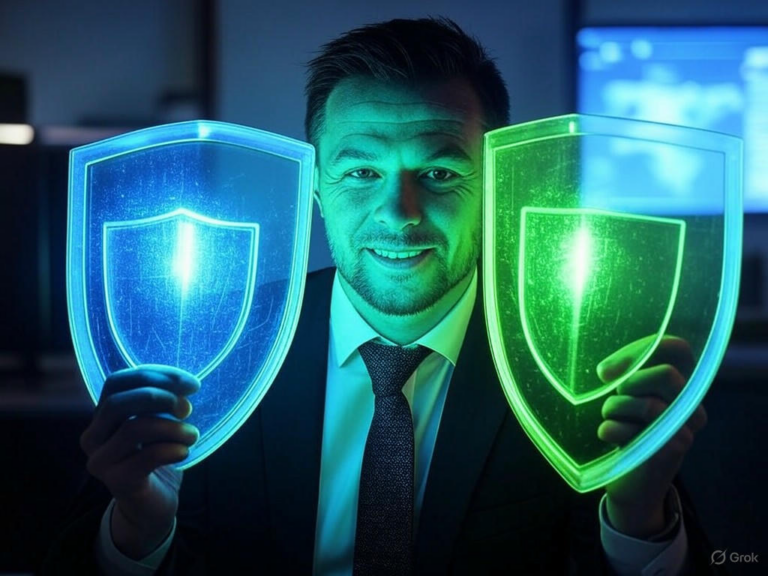
NIST Cybersecurity Experts Retire, Impacting Standards and Research
Introduction
The wave of NIST cybersecurity retirements is shaking up the landscape of American cyber defense, as key experts leave the National Institute of Standards and Technology (NIST). These departures, from leaders who helped shape responses to threats like quantum computing and AI, are raising alarms about the future of U.S. cybersecurity strategies. With industries and governments leaning heavily on NIST’s guidance, NIST cybersecurity retirements could disrupt innovation and global leadership at a critical time.
Imagine a scenario where the experts who built the digital safeguards for banks, hospitals, and tech firms suddenly step away—what happens next? As threats evolve faster than ever, maintaining this expertise isn’t just important; it’s essential for staying ahead.
Understanding NIST’s Role in Cybersecurity
NIST stands as a cornerstone for developing cybersecurity standards that guide federal agencies, businesses, and even international partners. From the foundational Cybersecurity Framework (CSF) to guidelines on AI risks, NIST’s work ensures we’re prepared for modern challenges.
Have you ever relied on a standard to protect your data? That’s likely NIST’s influence at play. Their portfolio covers everything from cryptography to privacy, making them a vital force in tech innovation.
Key Figures Departing and the Stakes Involved
Among those affected by NIST cybersecurity retirements are high-profile names like Matthew Scholl, who led the Computer Security Division, and Tim Hall, a key figure in security testing. David Ferraiolo and about a dozen others are also exiting, amid budget-driven cutbacks that could impact up to 20% of NIST’s staff.
This isn’t just about names on a roster—it’s about losing decades of knowledge that drives real-world protections. Experts like former DHS staffer Nick Reese warn that this could slow down the creation and updates of essential standards.
Effects on Institutional Expertise and Ongoing Research
These retirements threaten to erode the deep institutional knowledge NIST has built up over years. Without these seasoned leaders, anticipating emerging threats becomes tougher, potentially leading to gaps in research that industries depend on.
For instance, think about how NIST’s past work has prevented major breaches—now, that continuity is at risk. A study from a leading cybersecurity source found that such losses could reduce the operational impact of NIST’s guidelines, leaving businesses vulnerable.
Ripple Effects on Standards and U.S. Innovation
NIST cybersecurity retirements are already casting shadows over critical frameworks like CSF 2.0, which businesses use to manage risks. Slower updates could mean outdated defenses against fast-changing threats.
Innovation in areas like AI and quantum security might stall, giving adversaries an edge. It’s a wake-up call for the U.S. to protect its position in global tech leadership.
Consequences for Framework Updates and Emerging Tech
With CSF 2.0 introducing new elements like the Govern function, timely revisions are crucial. But NIST cybersecurity retirements could delay these, affecting how organizations handle executive-level cyber risks.
Consider the rise of AI: Without NIST’s guidance, companies might struggle to deploy it safely. This highlights the broader impact on research in quantum and AI security, where U.S. dominance is now in question.
Concerns from the Private Sector and Regulators
Business leaders and trade groups are voicing worries about NIST’s non-regulatory approach, which relies on collaboration. If retirements lead to instability, standards could become fragmented, hurting industry competitiveness.
What’s at stake? National security and economic growth, as firms depend on NIST for reliable benchmarks. A recent report from industry coalitions emphasizes the need for a stable workforce to keep this partnership strong.
Evolution of the NIST Cybersecurity Framework
The NIST Cybersecurity Framework has been a game-changer since its inception, evolving from CSF 1.x to the more robust CSF 2.0. This latest version adds a Govern function, pushing cybersecurity into boardroom discussions.
Here’s a quick overview to see how far it’s come:
| Framework Version | Key Features | Role of NIST Expertise |
|---|---|---|
| CSF 1.x | Core functions like Identify, Protect, Detect, Respond, and Recover | Driven by experienced teams for widespread adoption |
| CSF 2.0 (2024) | Includes Govern for executive oversight and enhanced AI focus | Future updates may falter due to key retirements |
Industry Alignment and Potential Disruptions
Regulators like the FFIEC have adopted CSF elements, making it a standard blueprint for risk management. Yet, ongoing NIST cybersecurity retirements might disrupt this harmony, leading to inconsistencies.
For organizations, this means staying vigilant. If updates lag, you could face compliance issues in a rapidly changing threat environment.
Budget Challenges and Future Outlook
Federal budget cuts, including a proposed $325 million slash, are fueling these retirements and a broader reorganization at NIST. As cyber threats grow, this timing couldn’t be worse.
The risks are clear: slower standard updates, weakened AI and quantum research, and strained collaborations. It’s a pivotal moment that could reshape U.S. cybersecurity for years.
Major Risks from Ongoing Staff Losses
Key dangers include outdated standards that fail to address new threats and a loss of global influence in tech. Additionally, partnerships between government and industry might weaken, creating a patchwork of defenses.
Is your organization ready for these changes? Proactively building internal capabilities could be the key to navigating this uncertainty.
Steps Organizations Can Take Now
In light of NIST cybersecurity retirements, companies should monitor updates closely and develop their own expertise to fill potential gaps. Collaborating with industry groups to support NIST’s funding is another smart move.
Don’t wait for problems to arise—elevate cybersecurity in your governance structure today. For example, integrating CSF 2.0 into your policies can help maintain strong defenses amid external shifts.
Adapting to Shifts in Cybersecurity Standards
With AI and quantum threats on the horizon, treating cybersecurity as a core business risk is essential. Use tools like CSF 2.0 to align your strategies, ensuring resilience even if NIST’s support evolves.
Here’s a tip: Start by auditing your current frameworks and identifying areas where you can build independence. It’s about turning potential challenges into opportunities for growth.
Wrapping Up: Navigating the Changes Ahead
As NIST grapples with these retirements, the future of U.S. cybersecurity hangs in the balance, affecting everything from privacy to technological leadership. Staying informed and adaptive will be crucial for businesses and individuals alike.
What are your thoughts on how these changes might impact your work? Share in the comments, explore more on our site, or connect with experts to discuss strategies. Let’s keep the conversation going—your insights could help shape a stronger digital future.
References
- Cybersecurity Dive. (2024). “NIST Cyber Retirements Impact Quantum, AI Research and Standards.” Retrieved from Cybersecurity Dive.
- Foundation for Defense of Democracies. (2025). “Cutting NIST’s Workforce Threatens American Tech Innovation.” Retrieved from FDD.
- Nextgov. (2025). “NIST Fires Over 70 Probationary Employees.” Retrieved from Nextgov.
- Seemetrics. (2025). “Cyber Governance: What the NIST Govern Function Means for Organizations.” Retrieved from Seemetrics.
- RubinBrown. (n.d.). “FFIEC Cybersecurity Assessment Tool: Alternative Frameworks.” Retrieved from RubinBrown.
- Upwork. (n.d.). “Hire Policy Writers.” Retrieved from Upwork.
- NIST. (n.d.). “Cybersecurity.” Retrieved from NIST.
- OCERS. (2025). “Audit Committee Meeting Agenda.” Retrieved from OCERS.
NIST cybersecurity retirements, NIST standards, cybersecurity research, AI security, quantum computing, cybersecurity framework, staff retirements, cyber defense, U.S. tech leadership, risk management






